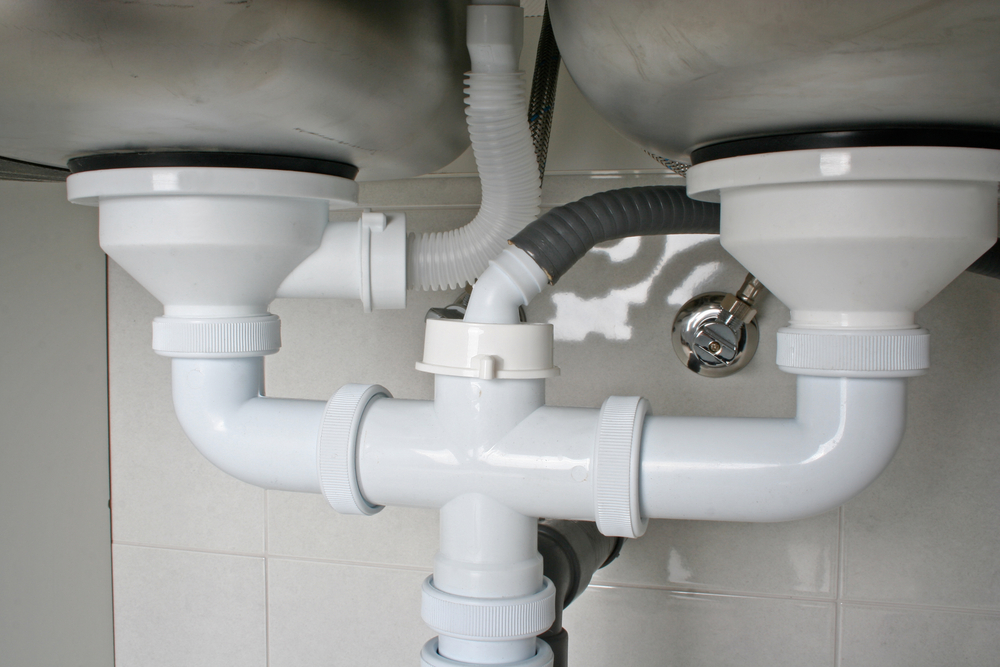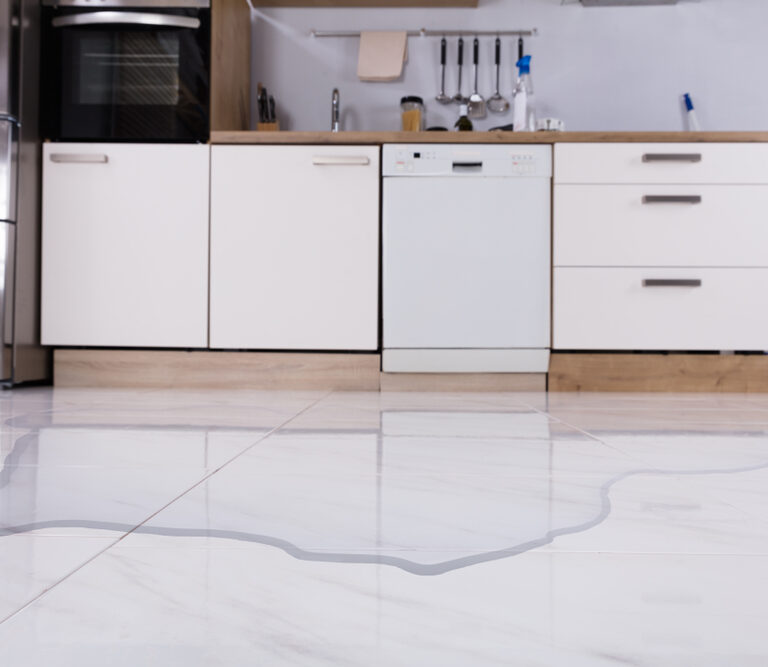Dishwashers are a wonderful modern convenience that can help you to keep up with an important daily household chore. When your dishwasher is leaking, however, it is going to cause you a lot of problems. Not only do you have to clean up a puddle in your kitchen every time you run the dishwasher, but it could actually be causing your floorboards to rot under the unit.
Fortunately, there are only a few different things that will commonly cause a dishwasher to leak. In most cases, all of these problems can be fixed without needing to call in a plumber or other expert. In this article, you will learn about the most common causes of a dishwasher leaking, and how to fix them.
Different Types of Dishwasher Leaks
The different types of dishwasher leaks are based on where the water is coming from. Of course, each of these options will require a different process for fixing the issue, and therefore different tools or parts. When trying to determine what type of leak you have, it is important to know approximately where the water is showing up.
For example, some dishwasher leaks result in water seeping out from under the unit. Others have the water coming out the sides of the dishwasher door, or even on the vent on the front. Trying to find where the water is coming from will help you to pinpoint exactly what type of leak you are dealing with.
Filter Clogs
One of the most common causes of a leaky dishwasher is that the water cannot drain out, which results in it pooling up in the unit until it leaks. If you see water leaking out the front steam vent or around the bottom part of the dishwasher door, it is usually going to be caused a problem with the drainage filter.
Repairing a Clogged Filter
The filter is there to prevent large pieces of food from clogging up the drain line. You should clean your filter about every 2-3 months, depending on how often you use your dishwasher. The specific location of your drain filter will vary from model to model, so reference your owner’s manual to find the location of yours.
Once you have found the drain filter, remove it (typically by turning it to the left and pulling it up), and remove anything that is clogging it up. Wash the filter out with water and place it back into your dishwasher. This should allow the water to properly drain so it doesn’t leak again.
Leak From the Water Supply Line
If you see the water coming out from the bottom of your dishwasher, it is likely that the issue is with the water supply line. This is an especially common issue immediately following an installation, because the supply hoses may not have been tightened down properly. It can also happen years down the road, however, if something wears out.
Repairing a Water Supply Line Leak
To gain access to the water supply line, start by removing the lower panel from the front of the unit. If there is no lower front panel, you may have to pull the whole unit out so you can access it from the back.
Once you have access to the supply line, attempt to look for wet areas, as they could help you find exactly where the water is leaking from. If you see water dripping from a damaged hose, for example, you will simply need to replace the entire hose.
More commonly, the leak will come from where the hose connects to the dishwasher. This is often caused by the hose becoming loose over time. Check to make sure the hose is securely tightened using your hand or a pair of slip joint plyers. Make sure not to overtighten, since the connection point is typically made of plastic and could break off. Once you have tightened it down, run your dishwasher to confirm that the problem has been fixed.
Problems With the Drain Line
If water is leaking out when you open the dishwasher door, or it leaks out the lower area of the unit, and you have already checked the filter, the issue could be with the drain line. Another symptom of this issue is if water remains pooled up in the dishwasher after it has completed its cycle.

Repairing an Issue With the Drain Line
The drain line for a dishwasher will almost always run from the back of the unit to the area under your kitchen sink where it attaches to the drainage pipe. You can typically troubleshoot this issue without having to have full access to the back of the dishwasher. Instead, go under your kitchen sink to work on the line.
Locate where the line connects to the wastewater pipe (or your garbage disposal, if applicable) and disconnect it.
This line will typically be held in place by a hose clamp. When you remove the line, place the end of it into a bucket that allows you to hold the end low so any water will drain out. Visually inspect the inside of the drain line for a clog.
Visually inspect the line for clogs. If you do not see any, hold the end of the hose up and pour some hot water into the line. Wait a few minutes, then bring the line back down to let it drain into the bucket. Reattach the line to the drainage pipe and test to see if it is still leaking.
If there is still a problem, you can pull the entire dishwasher out and replace the entire drain line. If that still does not fix the problem, the issue is likely with the drain motor, which would require an expert to replace.
Issues With the Dishwasher Door Seal
When water is leaking out of the sides of the dishwasher door, it means that a proper seal is not being achieved when you close and lock the unit. There are two main reasons why this will happen. The first, and most common, is that the gasket that helps to create the waterproof seal is worn out and needs to be replaced. The other potential problem is that the latch that pulls the dishwasher door tight is damaged.
Repairing an Issue With a Dishwasher Gasket or Latch
A new gasket for your dishwasher is very affordable and easy to replace, so this is the best place to start. Order a new gasket for your dishwasher model, and when it arrives, remove the old one (they will typically slide out of a groove in the dishwasher door, but check your owner’s book for instructions). Slide the new one in and test it out.
If the problem is with the latch, you will need to order a new one for your specific model. Every dishwasher is different when it comes to how to replace the door latch. In most cases, you will have to remove the inside cover to gain access to the latch. Once you have access, the latch itself will usually be held in place by two or three screws.
Depending on the model, there may be wires connected to the latch to engage it when you start a cycle. If that is the case, carefully remove them and take note of which wire goes to which location so you can hook it back up properly.
Place the new latch mechanism in the proper location, secure it with new screws, and attach any wires if applicable.
Carefully put the inside cover back in place and make sure it is properly secured. Once done, close the dishwasher, engage the latch, and run a wash cycle to see if this fixed the problem.
Unlevel Dishwasher Causing Leaking
One last issue that could be causing leaking is if your dishwasher was not leveled properly when installed. If this is the case, the water could leak out from a number of locations, depending on how the unit is unbalanced. If your leaking issues did not start right away after installation, this is almost certainly not going to be the problem.
Repairing an Unlevel Dishwasher
To check if your dishwasher is level, close the door and place a level across the top of it. Check to see if the unit is uneven or not. If it is, locate the leveling legs at the bottom and adjust them until the unit is level. This is typically done by simply turning the leveling legs so that they move up or down.
It is also possible, though less likely, that the unit could be unbalanced from the front to the back. To check this, you will need to pull the dishwasher out from its location and place the level toward the middle of the unit. If you find that it is unbalanced in this way, adjust the leveling legs in the back to correct the problem.
Fix Your Leaking Dishwasher Right Away
Now that you know about five of the most common causes of a leaking dishwasher, it is time to get yours fixed. Make sure you do not keep using the dishwasher until you have fixed the leak, or it could cause much more significant, and costly, repairs in the future. Fortunately, most types of leaks can be identified and fixed using the information found here.
